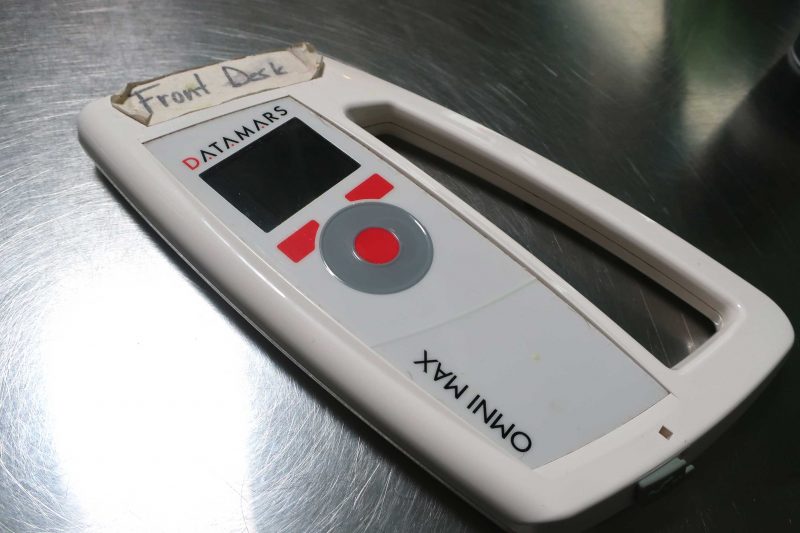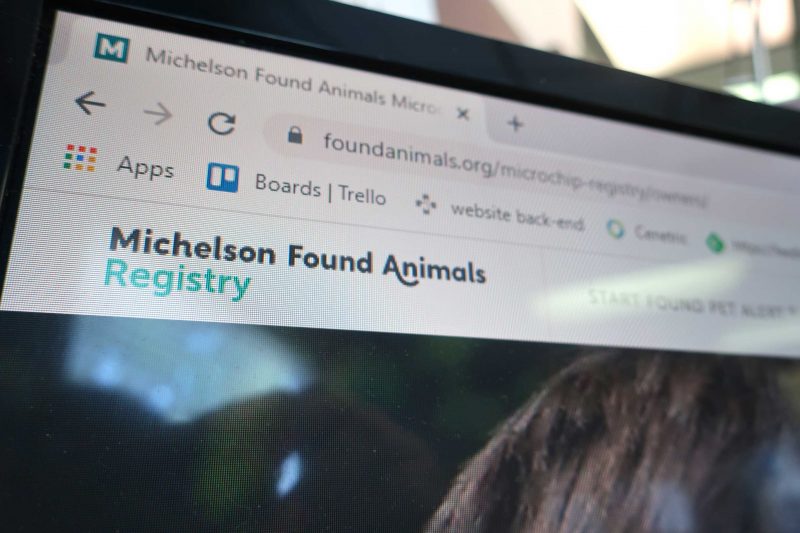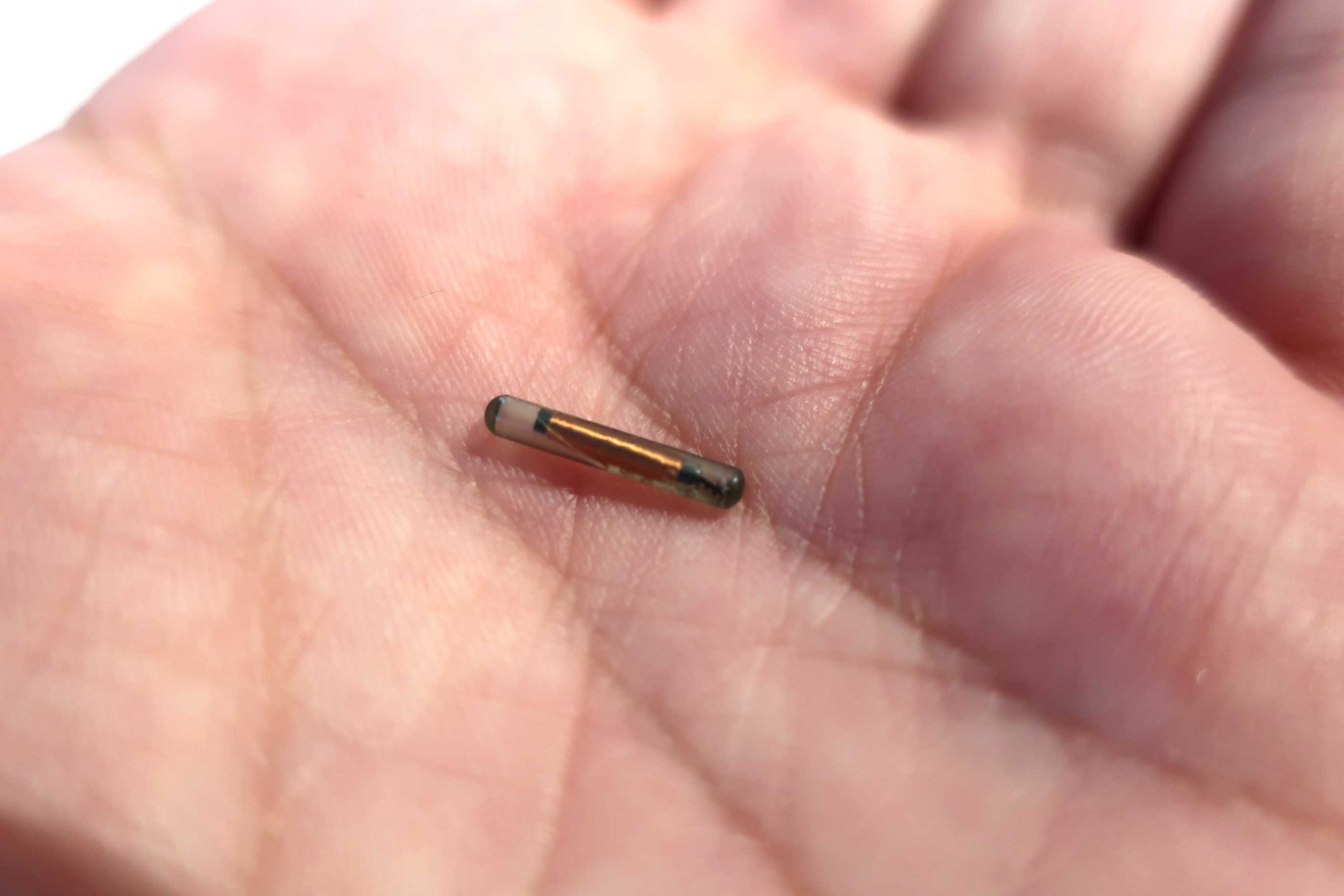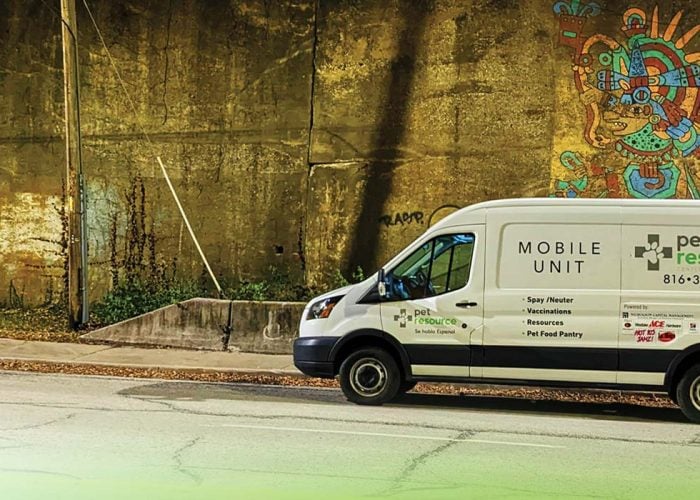Microchips are the best way to ensure that you and your pet get reunited in the event that they’re lost or stolen, but there are a few things you need to know first.
1. It’s not a tracking device
Pet microchips don’t have any form of GPS in them, so they don’t track your pet.
So what’s in a pet microchip? Have a look:
It’s a pretty simple set-up, because… well it’s a pretty simple device, encased in bioglass, that eventually bonds with your pet’s muscle tissue. It just has a microchip inside that stores a string of ID characters, a capacitor to store info, and an antenna coil. That’s it. Unlike ID tags, which can come off or be removed, the microchip is safe and secure.
And a microchip scanner looks like this:

What happens when a dog gets scanned is that the microchip under their skin absorbs a tiny bit of energy from the scanner, just enough to send a signal back; then it goes inert once again, with no capacity to do anything. The info it bounces back shows up on the scanner’s screen. This is the microchip number. That number then gets typed manually into a database, and turns up the owner’s info so that they can be contacted. This brings us to the second big thing to remember about microchips, one that we can’t say enough:

2. You have to register your microchip.
You have to. It doesn’t work otherwise. If someone finds your pet, scans it, types the microchip number into the database, and nothing comes up, they’re left with no way to contact you and reunite you with your pet.
Where to register? Depends on what you want. You can always register and update your information for free on The Found Animals Registry at found.org. That’s always our first recommendation for folks, because we’re always looking for the most affordable way for our clients to take care of their pets. That’s just what we do.
But there’s no shortage of places online like HomeAgain that charge a monthly or yearly fee, but come with extra services like a pet health hotline, mobile alerts, and more. It’s really a matter of what you want.
So now you’ve got your microchip registered. What happens when you move, since your microchip data is tied to your contact info? Or what if you change phone numbers? Ah, well, that brings us to number 3:
3. Keep your info updated
If you’re moving, put it on a checklist of things you need to update, just like you would in setting up your electricity or gas. Honestly, there’s nothing more heartbreaking than finding a lost pet and being able to get contact info, only to discover that the owner no longer lives there and forgot to update their information. So close, yet so far.
Same goes for changing your phone number, obviously. It’s impossible to call somebody when you don’t have their number! So anytime your contact info changes, just head on over to your microchip registry and keep things current. It could mean everything in a desperate situation.
Now, just because you’ve got your pet microchipped doesn’t mean it’s a free pass to let your pup go wherever. It’s important to remember that there’s no substitute for safety and security. Make sure your pet does have proper ID tags in addition to the microchip, always put your dog on a leash if they’re outside (your cat too, for that matter, if they’ll allow it), and make sure you’re still securing doors and yards.
There are fewer things as wonderful as being reunited with your pet after they’ve been lost; we’ve seen it again and again. After weeks, after months, sometimes after even years. All because of a little chip. Scanning for a microchip is the first thing a vet clinic or rescue will do, so getting your pet chipped and keeping it up-to-date is the first thing you should do.


